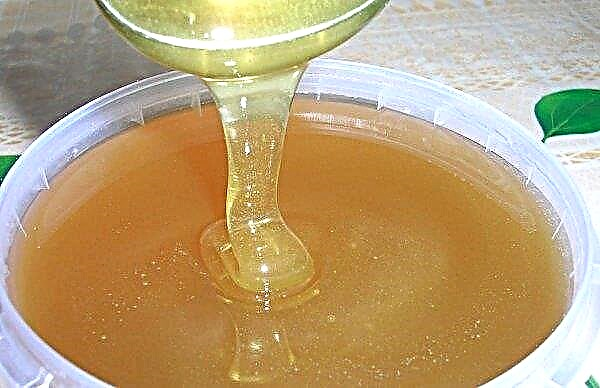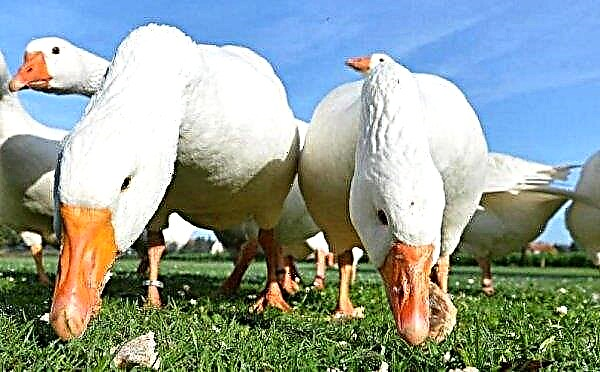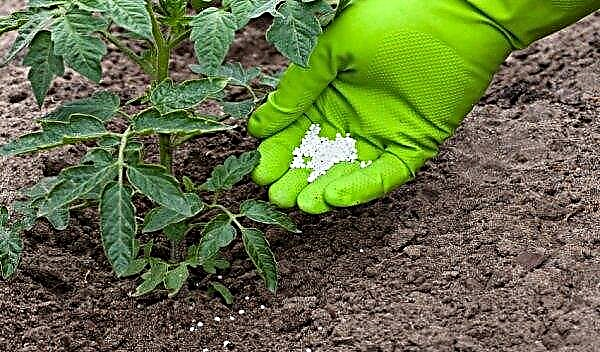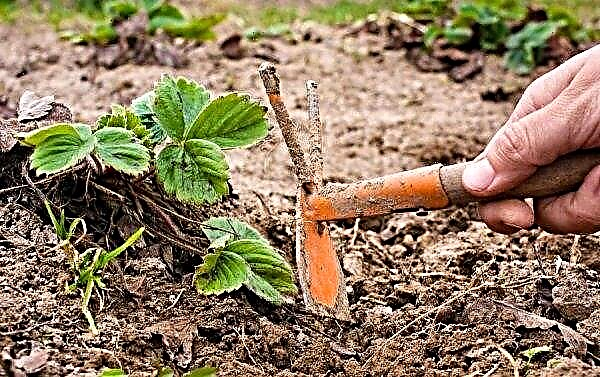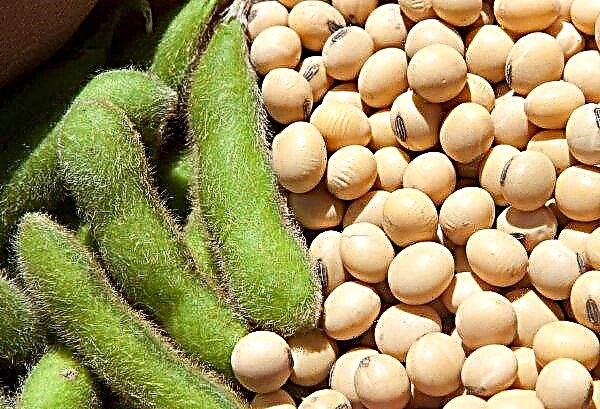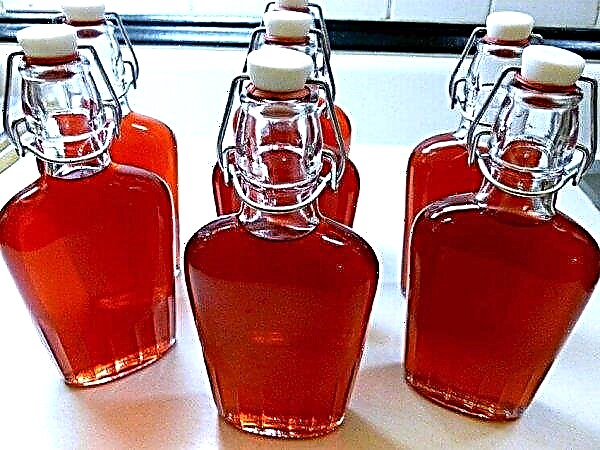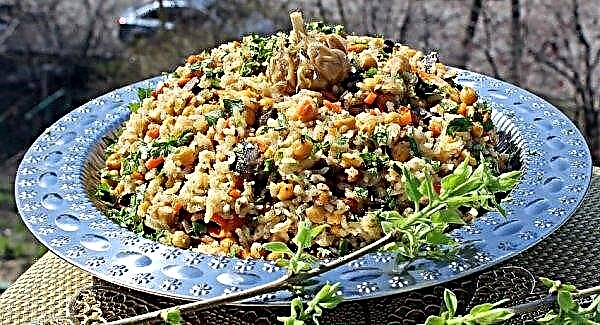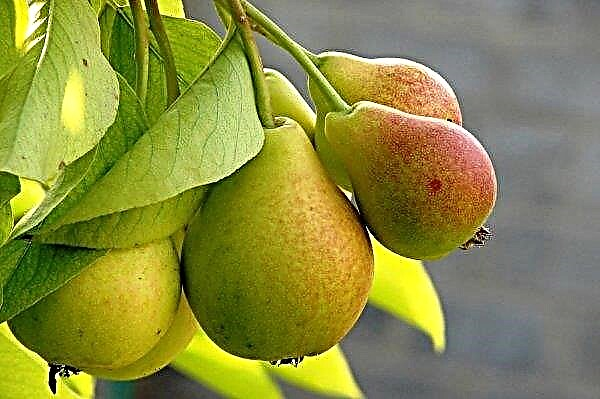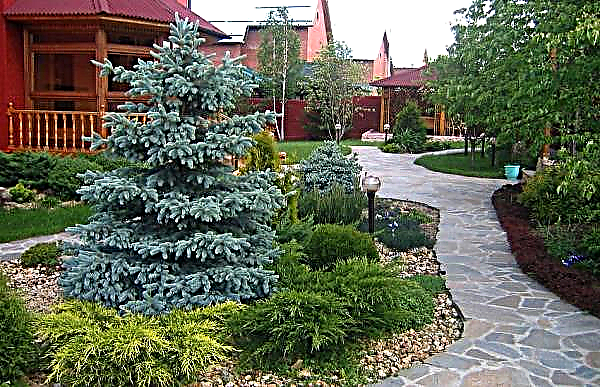In this article, you will learn how to decorate your garden with the dwarf oriental arborvitae of the Aurea Nana variety. This popular shrub is quite whimsical to care for, but it can become a real highlight of the composition in your garden. In order to avoid mistakes when growing this tree and preserve its beauty, it is necessary to follow simple rules and principles, the description of which is given below.
Plant description
Thuja Aurea Nana is a dwarf evergreen shrub. Coniferous plant, very beautiful, miniature size. Due to its size, many gardeners liked to grow it around summer and private houses. Once the thawing Aurea Nana could only be found in Beijing, and now, thanks to its beauty, it has spread throughout the world.
The second name - "tree of life" - the plant received for very slow growth and durability. In a year, it grows no more than 5 cm, and can live up to 1000 years.
This thuja variety has distinctive features:
- The crown is very dense, has an oblong shape. Diameter - about 0.7 m.
- Branches are spreading, with a golden tint.
- In winter, this shrub is even more decorative: its crown becomes bronze.
- Fresh processes go in two rows. After the third year, their shape is rounded, and the shade darkens.
- The height of the bush is usually about 1.5 m.
It is recommended to pay attention to one of the species of this arborvitae - Pyramidilis Aurea. It is used as a color accent for landscape composition, as well as for creating trimmed alleys and hedges.
Important! There are two varieties of the Aurea Nana variety: western and eastern. They are almost indistinguishable in appearance, while the western one grows both in the sun and in partial shade, and the eastern one feels good only in brightly lit areas.
Landscape design application
Aurea Nana is widely used in the refinement of local territories. This is a great option for decorating a rocky garden or alpine slide, flower beds and mixborders. She can decorate the roof and terrace, as well as the balcony.
The hedge, made up of these mini-bushes planted closely, will be one of the most noticeable details in the selected area. Also, this species will look great in compositions with low trees and small bushes, which have a striking embossed foliage shape.
Time and place for landing
Thuja is a light-loving plant, therefore, it is necessary to plant it in a place lit by the sun, but without the direct influence of the rays on the plant. A well-lit area, protected from drafts, with fertile moist soil are the main conditions that a young tree needs to form a complete root system.
If you plant a thuja in the shade, it will grow more slowly, its beautiful golden needles will turn green, and the crown will fade. Soil should be chosen light and fresh, you can stony, most importantly, so that it is moisturized. Thuya loves the spring season, so it is better to plant it in early May.
Step-by-step landing instructions
Below is an algorithm of actions, observing which you can plant a toy:
- Prepare the soil - a mixture of sand and peat must be poured into the pit.
- The pit should be about 80 cm deep; a drainage layer should be poured into the bottom.
- Before planting, it is worth holding the roots in the water until air comes out.
- Lower the seedling in the hole in the center with the condition that the root neck is higher than the surface of the soil.
- Fill the pit with earth, remembering to compact the soil.
- After this, it is necessary to irrigate using 15–20 liters of water.
- At the end, cover the surface with peat or bark of pine.

Further care
The miniature Aurea Nana, like all its high tribesmen, is a very hardy and unpretentious plant. High-quality planting material will provide you half the success when growing. It is better to land in spring in the already warmed up soil, so that the young growth will receive a whole season for settling in a new place. Under these conditions, minimal care will be required: high-quality moderate watering, top dressing 1-2 times per season and mulching.
Did you know? Native Americans used thuja needles as a cure for headaches and scurvy: its leaves and stems contain large amounts of vitamin C.
Watering and sprinkling
When deciding on a watering schedule, remember that all evergreens evaporate a lot of moisture and that is why they are so demanding on additional water supplies.The adult thuja of this variety easily tolerates short droughts, but previously needs regular watering at least 2 times a week. Moreover, it is necessary to moisturize it through a sprayer, carrying out the action throughout the entire bore circle. From the second season, you can reduce the number of procedures to two per month.
Sprinkling the crown (dense spraying with clean water from a spray bottle) is also necessary for a young plant weekly. It is important to choose the moment when the sun is not at the peak of activity in order to avoid burns of needles.
On particularly hot spring days, in the hours of sunshine, the crown of a young seedling needs to be protected by throwing any non-woven material or a special protective net. Formed in the absence of extreme heat, it is enough to water twice a month.
Top dressing
To give the tree enough care, but not to spoil the decorative characteristics, it is important to observe the norm for fertilizer application. Otherwise, the overfed thuja will begin to grow, and instead of fluffy greens, you will get bare shoots, and you will not be able to maintain the shape of the crown even with careful trimming.
Traditionally, top dressing is performed twice a year: in spring and autumn. But in exceptional cases, for example, on poor soils or after a disease suffered by a plant, one can add one root application or even nutritious sprinkling.The composition of the nutrient mixture includes the dwarf ash, beloved by dwarf thuja, and a specialized (intended for coniferous) mineral complex. All fertilizers are introduced into the soil through depressions in the basal territory. In spring, you can feed the slow-growing thaw of Aurei Nan with nitroammophos, but not more than 25-30 g / m². Potassium mixtures are recommended in autumn.
In spring, you can feed the slow-growing thaw of Aurei Nan with nitroammophos, but not more than 25-30 g / m². Potassium mixtures are recommended in autumn.
Loosening and mulching
The basis of the vitality of any arborvitae is a strong root system. In order to limit the excessive evaporation of moisture from the soil on the one hand and stagnation of rainwater on the other, It is necessary to carry out regular mulching of the trunk circle. Using wood chips or needles, you will achieve good air exchange for the root system.
Stop the procedure even for mature strong plants is not worth it. Moreover, materials that not only have a moisture-regulating function, but also have an attractive appearance are currently on the market. In addition, simple pine needles look interesting under a lush green cone.
Pruning
Elegant Aurea Nana is gaining popularity every year in private gardens and city parks, recreation areas. Easy care, slow growth and appearance of the crown make this type of thuja an excellent material for creativity. But to maintain the shape of the plant requires competent and timely pruning.

First of all, it is sanitary pruning, freeing the crown from diseased and dried branches. Also yellowed, damaged by insects or frost parts of the tree are removed.
Important! Thuja of the variety in question tolerates temperature reduction quite steadily. She also perfectly survives in urban environments and adapts to gas pollution.
The second direction of the haircut is aesthetic, shaping the silhouette of the plant, adjustment of density or lines of natural growth. Dwarf slow-growing thujas, to which Aurea Nana belongs, rarely need such a haircut.
Regardless of the results you want to achieve, thuja need to be cut in spring or summer. If you hurry up and start pruning in March, before the buds are formed, you can disrupt the vegetation and stop the unhurried growth of the tree. It is important to understand that any intervention is traumatic for the plant and in the future will require energy and time to recover.
Experienced gardeners agree that thuja can be cut no earlier than six years of age. It takes so much time for the plant to form the root system and begin to evenly increase the crown.The three most serious errors can lead to injury or even death of a thuja:
- Too zealous removal of branches, more than 25-30% of the green mass of the crown. A plant that has suffered such a loss will simply not be able to provide itself with nutrition and moisture during a period that in itself requires additional recovery forces.
- Excessive exposure of the branches, on which the thuja can not restore needles on its own, such shoots will simply dry.
- The location of the cut close to the kidney, which will lead to drying and death.
Video: Thuja trim
If sanitary pruning is necessary, then decorative processing is a matter of taste. The fluffy hat with the original needles is very attractive in itself.
Shelter for the winter
Preparing for winter is aimed at protecting the miniature plant from two serious dangers: low temperatures that are traumatic for the roots and snow masses that can damage the crown. Winter itself is well tolerated even with strong short-term frosts.
Moreover, in the snow season, these evergreen shrubs become even more colorful, acquire an unusual bronze tone of needles, become a real decoration of the garden. But snow, especially wet, is dangerous for a tree of any age, and gardeners have to pull the crown together with a ribbon to protect branches from fractures, and green mass - from frostbite and decay.Did you know? For the first time the name "thuja" was invented by a botanist from Sweden Karl Linney. In 1753, he described the rite among the Greeks, in which they used thuja to give a smell to fire.

The root system itself, if already formed, is not necessary to cover. And in the early years, lapnik and any special covering materials are suitable for warming. It is important to remember that, like all conifers, arborvitae are afraid of stagnation of moisture, debate, which will become favorable soil for fungal and other diseases. For this reason, it is important to protect the roots to choose a material that does not give a greenhouse effect, and to remove it in time - at the first sign of soil warming.
Disease and Pest Prevention
Thuya Aurea Nana is distinguished by endurance even against the background of extremely unpretentious relatives. And yet, some preventive measures will not be superfluous, especially since most of the diseases of the arborvitae occur against the background of stagnation of moisture, and they can be avoided by observing the irrigation regime, choosing the right site and regular mulching. It is also important to prevent organic fertilizing, especially chicken droppings and manure.
There are drugs that have proven their effectiveness specifically for dwarf varieties: this is Bordeaux liquid (a recipe for it can be easily found in open sources) and fungicides, widely represented in the market. The most important thing is to track the first signs of the disease in time: the brown color of the shoots, yellowing and falling of needles, ulcers and neoplasms on the bark.
Pests can also cause trouble, against which both insecticidal drugs and folk remedies are used. So, for example, most insects are afraid of dandelion and garlic infusions. In any case, the branch damaged by insects, or the place where they settled, must be destroyed. And a tree that has been attacked by pests needs to be fed after disinfection.
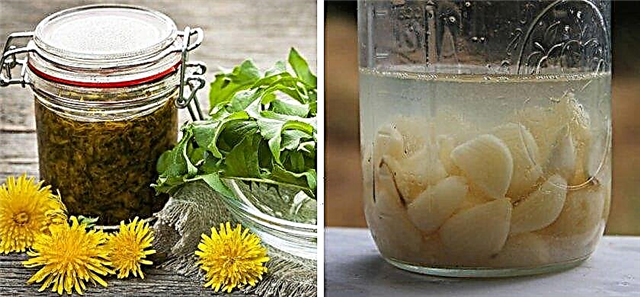
Now you know how to grow a beautiful coniferous tree on your site that will delight you with its beauty all year round. Tuya Aurea Nana can be used in various forms and compositions, including as a hedge that protects from strong winds. However, for this, you should adhere to the rules and recommendations for care.

